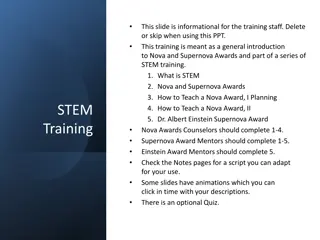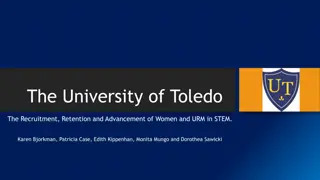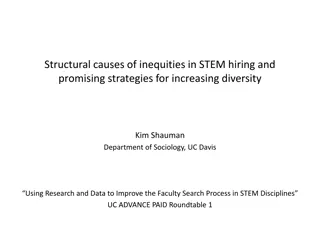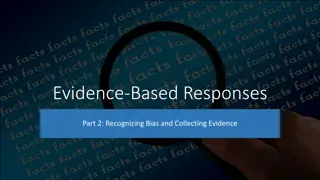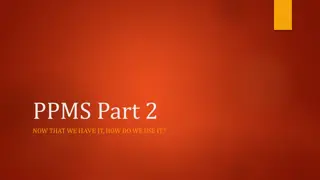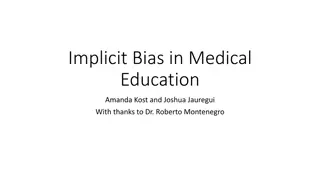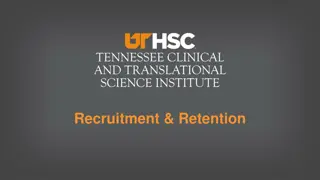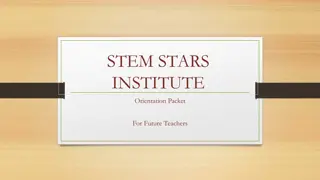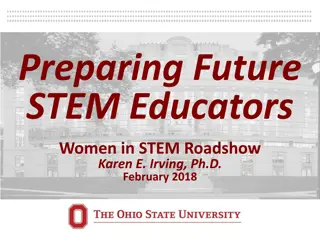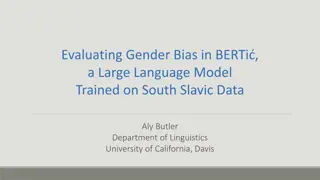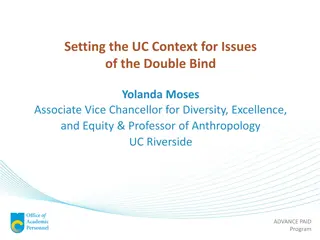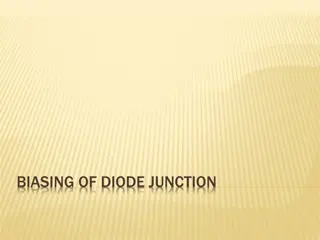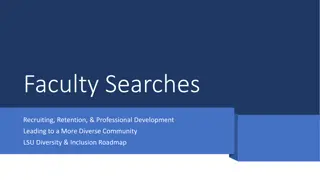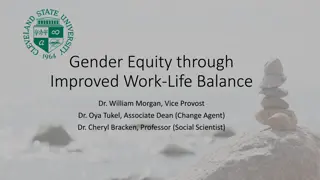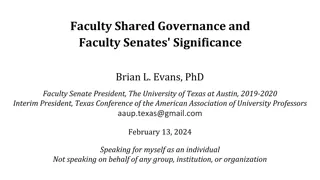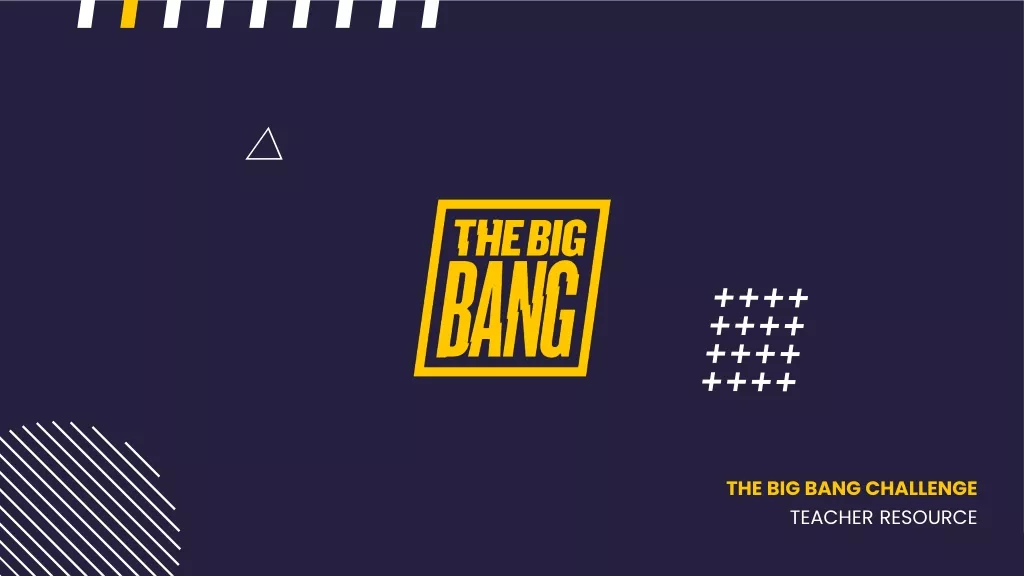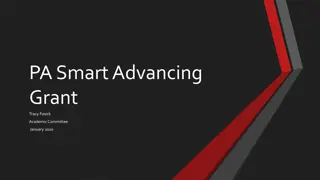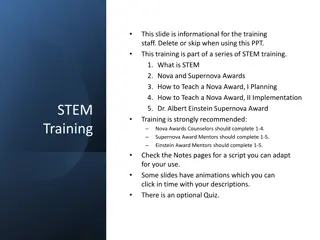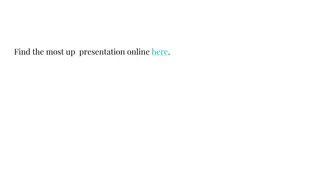Gender Bias in STEM Faculty Recruitment
Research indicates that women are underrepresented among STEM faculty members, potentially due to bias in the search process. Studies show evidence of bias against women candidates in male-dominated fields like mechanical engineering, leading to lower hiring rates. Another study revealed bias in faculty evaluations, where identical CVs with male and female names were assessed differently for hire and tenure decisions. Addressing these biases is crucial to promote gender equality in STEM academia.
Download Presentation

Please find below an Image/Link to download the presentation.
The content on the website is provided AS IS for your information and personal use only. It may not be sold, licensed, or shared on other websites without obtaining consent from the author. Download presentation by click this link. If you encounter any issues during the download, it is possible that the publisher has removed the file from their server.
E N D
Presentation Transcript
Are women underrepresented among STEM faculty because of bias in the search process? Leah Haimo Professor of Biology, Associate Dean of Graduation Division UC Riverside
UC Demographics, F10 60 50 40 % 30 female 20 10 0 undergraduates academic graduates ladder rank faculty http://www.universityofcalifornia.edu/accountability/index/8.1.2
Women are particularly under-represented among UC faculty in STEM fields http://www.universityofcalifornia.edu/diversity/documents/diversity-accountability-report-and-appendix-0910.pdf
Are women underrepresented among STEM faculty because of bias in the search process?
Is there evidence for bias against women who apply for a position in a male field? 64 participants (introductory psych students), 25 female, 39 male Evaluate 14 applicants for a mechanical engineering internship Select 3 to short list Read single letter of recommendation for each short list candidate Select 1 candidate to hire 14 resumes created, 7 pairs, matched for quality. One of each pair given female name, the other given male name. Female-male names switched for half the participants. 3 letters of rec created, all of equal quality. Letters then rotated randomly among the short list applicants Biernat and Fuegen, 2001, J. Soc Issues, 57:707-724
Woman were less likely to be hired for the mechanical engineering internship. The bias against women derived from female, not male, participants. Biernat and Fuegen, cont
Is there evidence for bias against women candidates applying for faculty positions and evaluated by faculty? identical CV with male or female name prepared evaluated by 238 psychology faculty nationwide vote yes or no to hire and tenure the applicant Steinpreis et al., 1999 Sex Roles, 41: 509-528
Experimental design Two actual CVs of a psychology professor were used: Job applicant CV the CV at the time the faculty member was hired as an Assistant Professor Tenure candidate CV the CV of that same faculty member at the time of her successful and early promotion to tenure Changes to actual CVs: name either Karen Miller or Brian Miller . Dates were adjusted in the job applicant CV (4 years added) so there would be no gap in activity between graduate school and the current job market. Steinpreis et al., cont
Experimental design, cont. A single CV (of the 4 possible) and a questionnaire were sent to 582 academicians selected randomly from the Directory of the American Psychological Association. Final participant pool consisted of 118 male and 120 female faculty members nationwide. Steinpreis et al., cont
What did the participants look for in a job applicant? 1. Ability to establish an independent research program 2. Collegiality/personality 3. Collaboration prospects with you or other faculty members n. Fulfilling affirmative action requirements There was no difference in the ranking of importance of these factors by female vs male participants Steinpreis et al., cont
Does the gender of the applicant affect how he/she fares? Steinpreis et al., cont
A male job applicant was more likely to be hired than was a female job applicant with the identical CV Steinpreis et al., cont
Does the gender of the reviewer affect how the job applicant is evaluated?
Both male and female reviewers were more likely to hire the male applicant than the female applicant with the identical CV
Summary In two controlled studies, females less likely to be hired than males with identical credentials. Female reviewers were as or more likely than male reviewers to be biased against female applicants.
Are there data which suggest bias against female applicants in actual STEM faculty searches? Bilimoria and Buch: examined all full time, ladder rank faculty searches in STEM fields during 2001-2 to 2006-7 at Case Western and during 2003-4 to 2007-08 at Charlotte. 319 total searches. Glass and Minnotte: examined all tenure track searches in STEM fields at a large midwestern university over 6 year period between 2000 and 2005. 63 searches in 19 departments, 3245 total applicants.
Bilimoria and Buch 2010 Glass and Minnotte 2010 institutions Case Western and UNC, Charlotte Large midwestern research university STEM searches in 2001-02 to 2006-07 2003-04 to 2007-08 2000-2005 # searches 193 (CW) 126 (UNC) 63 # applicants 3245 % female applicants 15.9 (CW) 15.2 % females on short list 30.7 (CW) 28.3 (UNC) 17 (63% of short lists included females) % searches that resulted in female candidate offer/hire 38.7 (CW) 35.5 (UNC) 30 % female vs male applicants hired 4.28 vs 2.03
Bilimoria and Buch 2010 Glass and Minnotte 2010 institutions Case Western and UNC, Charlotte Large midwestern research university STEM searches in 2001-02 to 2006-07 2003-04 to 2007-08 2000-2005 # searches 193 (CW) 126 (UNC) 63 # applicants 3245 % female applicants 15.9 (CW) 15.2 % females on short list 30.7 (CW) 28.3 (UNC) 17 (63% of short lists included females) % searches that resulted in female candidate offer/hire 38.7 (CW) 35.5 (UNC) 30 % female vs male applicants hired 4.28 vs 2.03
What factors correlate with female STEM hires? 1. Does having one or more women on the search cmt increase the likelihood of hiring a woman? NO 2. Does the % women in the hiring department increase the likelihood of hiring a woman? NO 3. Does the % women in the hiring department increase the % of female applicants? NO 4. Does the % female applicants correlate with the likelihood of hiring a woman? YES 4. Does placing an ad in a venue that targets women correlate with an increase in the % women in the applicant pool? YES Glass and Minnotte, 2010
What about at UC? Is there evidence for bias in the search process in STEM fields?
% female STEM faculty at UC vs availability tenured and non-tenured 60 Availability (doctoral degree recipients 1988- 2002) 50 40 UC tenured faculty, F' 09 % female 30 Availability (doctoral degree recipients, 2003- 2007) 20 UC Non-tenured faculty, F' 09 10 0 Life Sciences CS, Math, ENG Phys. Sci http://www.ucop.edu/acadpersonnel/datamgmt/documents/incumbents_tenuredgender.pdf http://www.ucop.edu/acadpersonnel/datamgmt/documents/incumbents_nontenurgender.pdf http://www.ucop.edu/acadpersonnel/datamgmt/availabilities.html
Summary: Bias in the search process CVs attributed to female candidates fared more poorly in hypothetical settings. However, analysis of STEM field searches at two universities during the past decade revealed that women were twice as likely to be hired as were males relative to their representation in the applicant pools. At UC, women overall are significantly under- represented among STEM faculty, but recent hires more closely represent female availability.
What can we expect for UC STEM faculty going forward? Is it reasonable to expect that 50% of the STEM faculty will be female?
Pool of future female STEM faculty 45 40 35 30 25 % Engineering female 20 Math/CompSci 15 Phys Sci 10 5 0 doctorates awarded 2009-10 Total Graduate Enrollment F '10 New Graduate Enrollment F'10 Graduate Enrollment and Degrees, 2000-2010, Council of Graduate Schools
UC graduate students, 2000-2010 http://www.universityofcalifornia.edu/accountability/index/8.6.2
2004 NIH Directors Pioneer Award Recipients Males in applicant pool: 80% Males in first cut: 87% Males in finalist pool: 90% Male recipients: 100% Male representation among reviewers: 94% (60 of 64) likelihood of an all male recipient outcome =13% http://commonfund.nih.gov/pioneer/Recipient s04.aspx
2005 NIH Directors Pioneer Award Recipients http://commonfund.nih.gov/pioneer/Recipient s05.aspx
2011 NIH Directors Pioneer Award Recipients https://commonfund.nih.gov/pioneer/Recipients11.aspx




